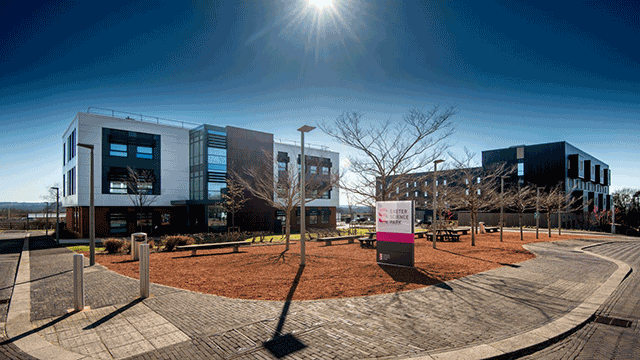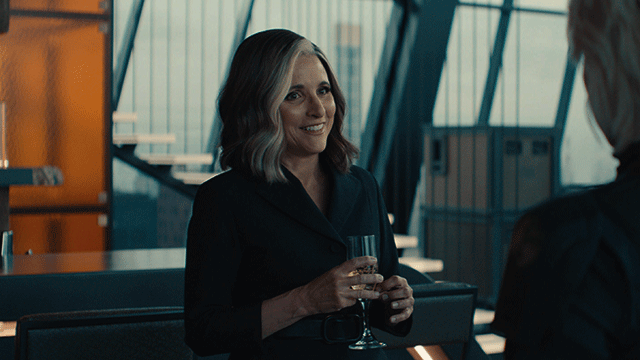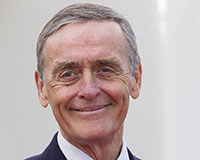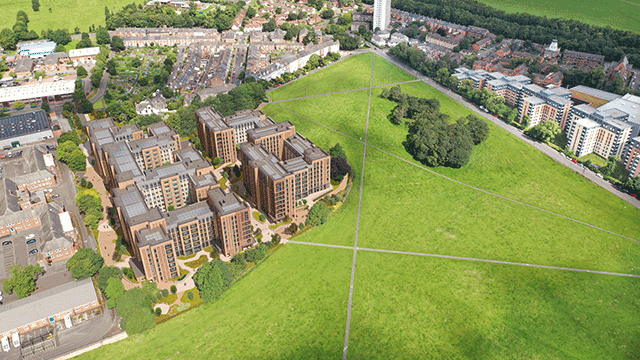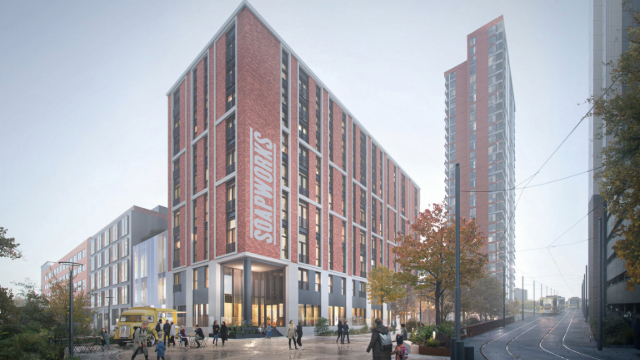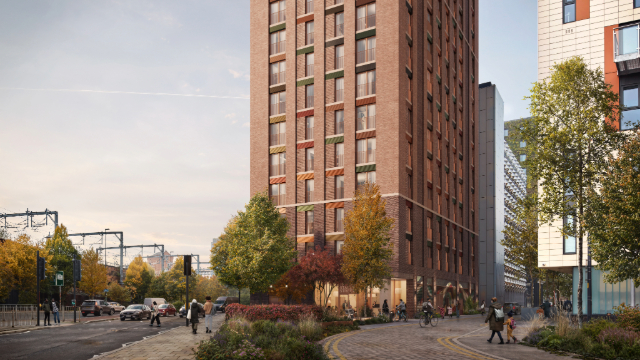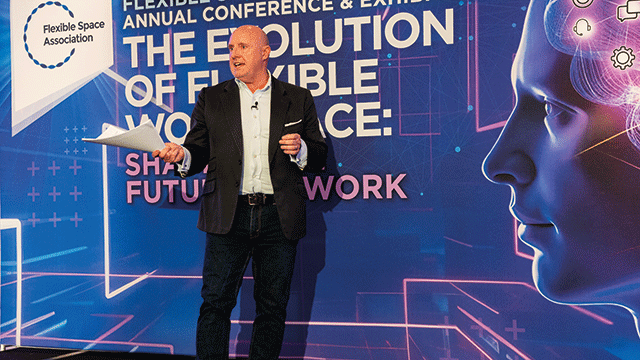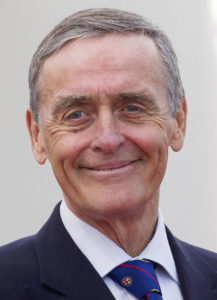 Following the news that the Duke of Westminster has died, EG looks back at his success over the past 10 years as one of the UK’s wealthiest landowners in the Estates Gazette and Sunday Times rich lists.
Following the news that the Duke of Westminster has died, EG looks back at his success over the past 10 years as one of the UK’s wealthiest landowners in the Estates Gazette and Sunday Times rich lists.
News: Grosvenor mourns Duke of Westminster
Do you have memories of the Duke of Westminster? Please send your thoughts and tributes to david.lindsell@estatesgazette.com
2007
Tops the rich list: £7,000m
The Duke of Westminster stepped down as chairman of Grosvenor Group on 1 May 2007 after 30 years at the helm of his family’s property group. But he remains involved through his chairmanship of the Grosvenor Trustees, who represent the family’s interests. His property operations are in fine fettle. Despite making a £140m loss on the Liverpool One urban regeneration project, Grosvenor Group – the family’s main property company – saw its profits rise 38% to £508.7m in 2006. The value of its assets rose 23% to £4.6bn. But, anxious to avoid a repeat of the Liverpool One experience, Grosvenor has begun forming joint ventures on its other major mixed-use schemes to share the risk as well as release cash to pump into development elsewhere. The first is a 50:50 joint venture with Australian company Lend Lease to bring forward Grosvenor’s £700m regeneration of Preston’s Tithebarn area, due for completion in 2013. Taking such a long view has, of course, helped Gerald Grosvenor, 55, the sixth Duke of Westminster, to become the richest property developer in Britain. The range of his wealth is staggering, taking in vast estates in Lancashire and Cheshire, great swathes of central London – in Mayfair and Belgravia – and tracts of land in Scotland, Canada and around the world. Within Grosvenor Group are the overseas holdings, the British development work and 100 acres of Mayfair. Separately, some 200 acres of Belgravia are held in family trusts which should be worth around £4bn. That would put a value of around £6.2bn on the total family assets. Taking in the £62m in dividends that the family trusts have had from Grosvenor Group since 1999, a valuable art collection and family properties, we reckon that Westminster and his family are now worth around £7bn. SEE ALSO: Estates Gazette Rich List 20072008
Tops the rich list: £7,000m
Duke of Westminster, who at £7bn tops this year’s list for the sixth year running and whose super-prime London estate and vast acres of farmland have made up for any falls in the rest of his portfolio. Ian and Richard Livingstone, the brothers who own London & Regional, also saw their £1.8bn fortune emerge unscathed. On the other hand, the second richest entrants, the Reuben brothers, saw £190m wiped away over the past year, partly owing to their investments in retirement specialist McCarthy & Stone. But with a total net worth of £3.3bn, that only equates to a 5% loss for the brothers. Indeed, the top four remain unchanged from last year and seven of this year’s top 10 were in the 2007 top 10. SEE ALSO: Estates Gazette Rich List 20082009
Tops the rich list: £6,500m (+£300m)
Grosvenor Group, the property giant controlled by the Duke of Westminster, 57, posted its worst results for 16 years in 2008. The group, which owns swathes of Mayfair, Belgravia and Knightsbridge, reported pretax losses of £593.9m last year, against profits of £524m in 2007. Write-downs of £536.7m included a hefty hit at its Liverpool One development. The Paradise Street project had already suffered nearly £200m in write-downs, largely due to revaluations and cost over-runs in the previous three years. But while chief executive Mark Preston admitted that “this is a challenging time for the property industry and inevitably Grosvenor has been affected”, he felt that the impact of the current downturn “has been cushioned by our well-diversified portfolio, low gearing, and steps taken since 2007 to curb acquisitions and reduce our development exposure”. The group is now working on only three major projects under development – the residential element of Liverpool One and sites in Australia and Vancouver. The group’s net asset value fell in 2008 7.4% to £2.7bn. With the private estates outside the group added, we cut our overall valuation of Westminster to £6.5bn, down £500m on the year. He can console himself that he became a grandfather in May, when his daughter Lady Tamara Grosvenor produced a son. SEE ALSO: Estates Gazette Rich List 20092010
Tops the rich List: £6,800m
Grosvenor Group, the property giant controlled by the 58-year-old Duke of Westminster, is expected to make around £55m from its joint venture development of 197 flats just behind the Tate Modern on Bankside. Its success prompted Grosvenor to enter into a second joint venture to pay £100m for the two-acre Holland Park Comprehensive School site. Some 72 upmarket flats will be built when the pupils vacate it in three years’ time. Grosvenor, which owns swathes of Mayfair, Belgravia and Knightsbridge, reported pretax losses in 2009 of £236m. This was down sharply from its £594m pretax losses the previous year, when it was still making provisions for the costly Liverpool One development. The group has also built up a war chest of nearly £1bn to return to global property markets such as Shanghai and other Chinese cities. It has, according to chief executive Mark Preston, “weathered the downturn well”. He said that the group had been around for more than 300 years, experiencing 20 recessions and more than 250 wars worldwide during that time. The Grosvenor Group shares are owned by various Grosvenor trusts set up for the benefit of the family, which is now headed by the sixth duke, who stood down as chairman of the board in 2007 after 33 years in the role, although he remains chairman of the trustees. The net asset value of the Grosvenor Group fell sharply in 2009 to under £2.4bn. However, with the private estates outside the group added, and with the top end of the London housing market now in recovery mode (as the Tate Modern sales show), we raise our overall valuation of Westminster slightly to £6.8bn this year. SEE ALSO: Estates Gazette Rich List 20102011
Tops the rich list: £7,000m
Grosvenor Group’s focus this year has been on reinvesting in its core London business, expanding in Asia and growing its fund management operation. It can well afford to after a spectacular turnaround in its last results, moving from a £236m loss in 2009 to a £395m profit for 2010 on the back of surging property values in its prime central London market.
It also raised £125m through a bond issue earlier this year that was heavily oversubscribed by UK and US investors.
The group is working on numerous projects at home: for example, it has teamed up with Derwent London to redevelop a prime site close to Hyde Park, possibly as a luxury hotel. It is also ploughing £10m into making Mayfair’s Mount Street and Carlos Place an exclusive shopping district for the super rich.
The fund management division, now headed by a Goldman Sachs veteran, recently formed a new joint venture with the Canada Pension Plan Investment Board to invest more than £200m in central London offices.
The history of the business controlled by Westminster dates back to 1677 when Sir Thomas Grosvenor married Mary Davies and what was then 500 acres of swamp, pasture and orchards came into the family. Today, that forms the heart of the 300-acre Mayfair estate, which is the heart of the Grosvenor family fortune.
The Grosvenor Group shares are controlled by the trustees of various trusts set up for the benefit of the Grosvenor family. The family is now headed by the 6th Duke, who stood down as chairman of the board in 2007 after 33 years in the role, although he has remained chairman of the trustees.
Grosvenor Group’s net asset value rose in 2010 to nearly £2.8bn. With the family’s private estate assets outside the group added and taking into account the strong performance of the prime central London residential market – which is expected to see price increases of 30% by 2015 – we raise our overall valuation of Westminster, 59, to £7bn this year.
SEE ALSO: Estates Gazette Rich List 20112012
Tops the rich list: £7,500m
Grosvenor Group, the property giant controlled by the Duke of Westminster, saw its net asset value rise in 2011 to nearly £3bn, though its profits fell by 20% to £315m due to problems in Europe. But the group remains in a strong position. It has £3.2bn of future developments in the pipeline in the Far East, America and London.
Strong demand for central London property continues unabated from wealthy overseas buyers. Westminster showed his ambition to grow his business by appointing a Goldman Sachs veteran to head the Grosvenor Fund Management arm, which manages £3.6bn of property assets.
Grosvenor also made its first joint purchase with the Canadian Pension Plan Investment Board since they formed their venture in July last year. Together they purchased Lacon House in Midtown, WC1, for around £95m.
One of the real success stories has been the Liverpool One shopping centre, which opened in 2008. At the time, the group wrote off £165m of its value and it was seen as a white elephant for Grosvenor. But the centre is now full and winning international awards.
The property business controlled by Westminster dates back to 1677 when Sir Thomas Grosvenor married Mary Davies and what was then 500 acres of swamp, pasture and orchards came into the family. Today, that forms the heart of the 300-acre Mayfair estate, which makes up the bulk of the Grosvenor family fortune.
The Grosvenor Group shares are owned by the trustees of various Grosvenor trusts set up for the benefit of the Grosvenor family, which is now headed by the sixth Duke, who stood down as chairman of the board in 2007 after 33 years in the role, although he has remained chairman of the trustees.
But with Westminster’s private estate assets outside the group added, and with the top end of the London housing market expected to grow in value by 30% by 2015, we raise our valuation of Westminster slightly to £7,500m.
SEE ALSO: Estates Gazette Rich List 20122013
Fourth place: £8,000m
The Grosevenor Group, the Duke of Westminster's property operation, is in talks with several investors to create a $700m property investment club that will fund four to six high-end developments in Hong Kong, China and Japan. SEE ALSO: Estates Gazette Rich List 20132014
Seventh place: £8,400m
Worried that the UK residential market is overheating, Grosvenor Group disposed of £240m of prime central London properties in April and warned that the threat of rising interest rates will affect market confidence. The Duke of Westminster’s property operation, is also in talks with several investors to create a £447m property investment club that will fund four to six high-end developments in Hong Kong, China and Japan. Grosvenor reported a pre-tax profits rise from £368m to £507m in 2013, with its net assets rising from £3.1bn to £3.455bn. Gerald Grosvenor, the sixth duke, stood down as chairman of the board in 2007 after 33 years in the role, although he has remained chairman of the trustees. Grosvenor has been managing land in the capital since 1677 and owns 300 acres of Belgravia and Mayfair and much of Oxford Street. The group almost doubled its development pipeline from £3.4bn to £6bn in 2013. The lion’s share of the firm’s work – around 86% – is in the UK, although the firm also has schemes in Ireland, the Americas and in Asia Pacific. Grosvenor is also working on an internal fund to invest in property equities. The long-short fund will begin by investing the company’s own money in listed real estate, but could open up to outside investors in the future. All of the Grosvenor Group shares are owned by the trustees of various Grosvenor trusts set up for the benefit of the Grosvenor family. Westminster’s private assets and estates include nearly 165,000 acres of rural land, the Chester Grosvenor Hotel and the UK’s largest bull stud operation. With the current uncertainty over the property market, Westminster’s asset wealth should now be around £8,400m. SEE ALSO: Estates Gazette Rich List 20142015
Seventh place: £8,830m
A £500m London sister hotel to Hong Kong’s venerable Peninsula – known as the “grande dame of the East” – is to open in Belgravia in 2021. The Peninsula London will have 190 rooms, some overlooking the gardens of Buckingham Palace. A planning application lodged with Westminster council in July shows that the building, on Grosvenor Place near Hyde Park Corner, SW1, will replace a 1960s office block on the 1.5-acre site.
The hotel, designed by Marylebone-based Hopkins Architects, will have a colonnaded walkway and main public entrance on Grosvenor Place and an internal “palazzo-style” courtyard. The complex will include shops, a spa, a ballroom and up to 28 residential apartments. The plans have been developed in partnership with landowner Grosvenor. It comes at a time when the Duke of Westminster’s Grosvenor Group, embracing his valuable London property round Mayfair, recently reported record profits of nearly £682m in 2014, up from £507m in 2013. Its net assets rose from £3.5bn to more than £4.055bn. The company sold UK assets worth £240m last year, while continuing its diversification into other markets across the world.
Grosvenor’s development pipeline stood at £5.5bn at the end of 2014, while the company said it had ring-fenced £1.1bn that can be used as a war chest should property markets tumble. The company is run by experienced professionals and Westminster, the sixth Duke, stood down as chairman of the board in 2007 after 33 years in the role.
All of Grosvenor Group’s shares are owned by the trustees of various Grosvenor trusts set up for the benefit of the Grosvenor family. Westminster’s private assets and estates include nearly 165,000 acres of rural land, a dairy farm, the Chester Grosvenor hotel and the UK’s largest bull stud operation. In all, the family wealth adds up to £8.83bn.
SEE ALSO: Estates Gazette Rich List 2015



